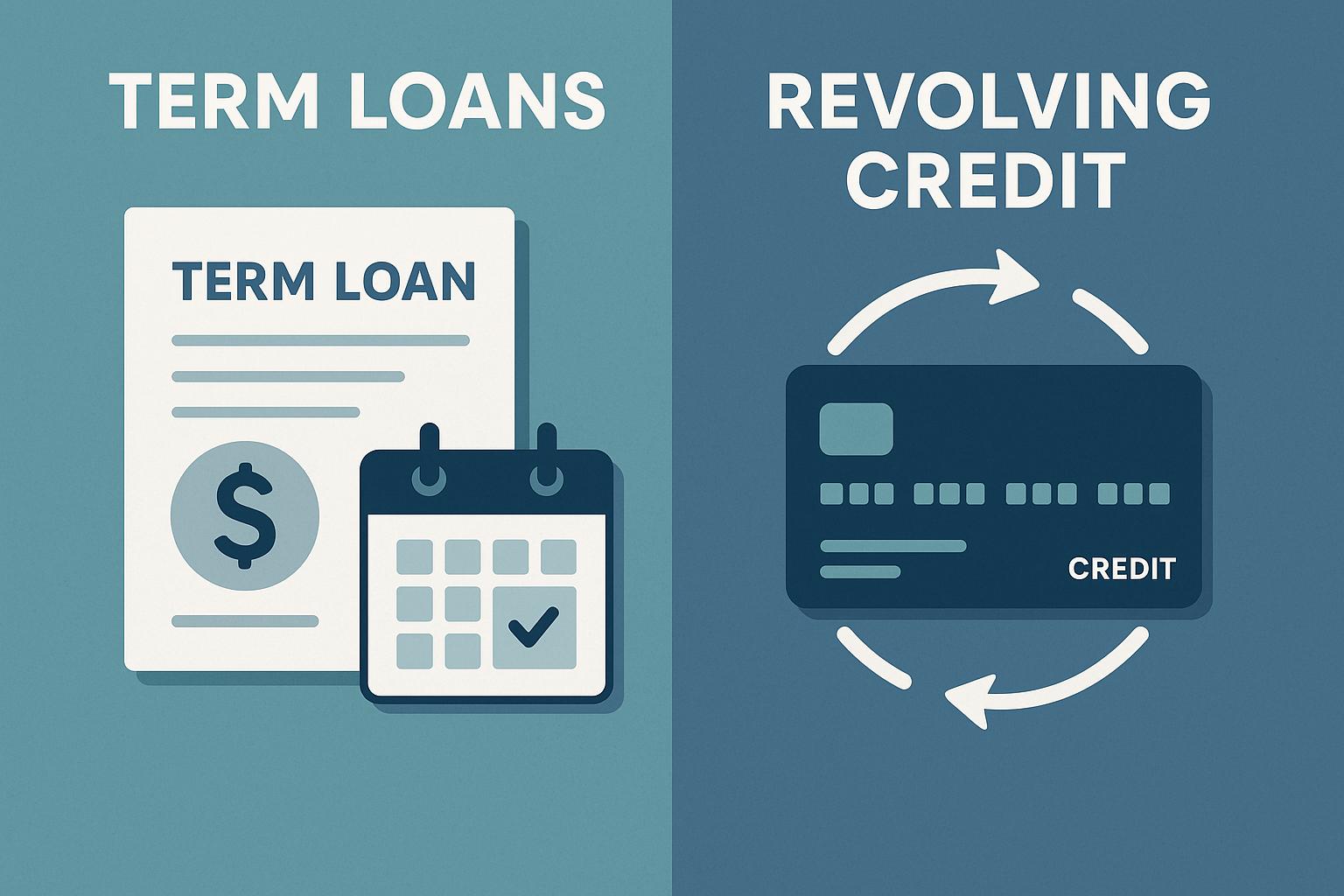
The differences between term loans and revolving credit.
Understanding Term Loans and Revolving Credit
When it comes to borrowing, two common financial instruments that individuals and businesses encounter are term loans and revolving credit. Each of these financial tools serves different needs, and understanding their differences is crucial for making informed financial decisions.
What is a Term Loan?
A term loan is a traditional financial product in which a borrower receives a lump sum of money from a lender. In exchange, the borrower agrees to repay this amount, plus interest, over a predetermined period. Term loans often feature a fixed interest rate and a set repayment schedule, which can provide consistency in budgeting. The structured nature of term loans ensures that both creditors and borrowers have clarity and expectations around the repayment process.
Purpose: Term loans are generally used for specific, larger expenditures such as purchasing equipment, real estate, or making significant business improvements. The predictability in their repayment schedule makes them favored for projects or investments that have a clear cost structure and completion time frame.
Repayment: The borrower makes regular payments, typically monthly, which include both principal and interest. This regular payment structure helps borrowers manage their finances better by planning for fixed monthly outflows, allowing them to maintain steady cash flow management.
Types: Term loans can be short-term (less than one year), intermediate-term (one to five years), or long-term (more than five years). Each type serves varied financial strategies and needs. Short-term loans are used for immediate needs, intermediate-term loans for moderate-scale projects, and long-term loans for large-scale initiatives like infrastructure or expansion.
What is Revolving Credit?
Revolving credit, on the other hand, offers borrowers a line of credit that they can draw from, repay, and draw from again, as needed. This type of credit is often associated with credit cards and certain business lines of credit. The flexibility provided by revolving credit can be especially advantageous for businesses or individuals who require frequent access to finance without renegotiating terms every time funds are needed.
Flexibility: Revolving credit provides flexibility, allowing borrowers to access funds up to a predetermined limit and to repay in variable amounts rather than fixed installments. This flexibility allows borrowers to adapt their debt repayment to changing financial conditions.
Interest: Interest is calculated based on the outstanding balance, which means borrowers only pay interest on the amount they have borrowed. This feature can make revolving credit a more cost-effective option for those who need to borrow sporadically.
Uses: This type of credit is commonly used for managing cash flow, covering unexpected expenses, or meeting short-term financing needs. It lends itself well to operational expenses in businesses where income and expenditure timing may not always align perfectly.
Key Differences Between Term Loans and Revolving Credit
While term loans and revolving credit can both provide financial support, their structures, use cases, and repayment strategies differ significantly. Understanding these distinctions is key to leveraging each tool effectively.
Repayment and Structure: Term loans offer predictability with a fixed repayment plan, while revolving credit provides flexibility with no set repayment schedule. This predictability of term loans ensures disciplined debt servicing but lacks the adaptability that revolving credit offers for irregular financial needs.
Funding Purpose: Term loans are typically geared towards large, one-time investments, whereas revolving credit is ideal for varying expenses and cash flow management. Businesses embarking on substantial one-off capital projects often prefer term loans, while those managing daily or monthly fluctuations in funds might opt for revolving credit.
Interest Calculations: In a term loan, interest is paid on the entire loan amount, while revolving credit charges interest only on the borrowed portion. This means that the cost structure of term loans is more rigid, potentially leading to higher costs if not managed efficiently, whereas revolving credit can align costs more closely with usage.
Choosing the Right Option
Selecting between a term loan and revolving credit depends on your specific financial needs and goals. For situations that require a significant sum of money over a long period, a term loan may be more suitable. Such scenarios include capital projects, large equipment purchases, or other instances with a clear funding need and repayment timeline.
Conversely, if you anticipate needing cash flow assistance or plan to make variable purchases, revolving credit might be a better fit. It offers the flexibility to adapt to changing financial situations and requirements without committing to fixed repayment amounts, making it particularly handy for covering variable operational costs, handling unexpected expenses, or managing uneven revenue streams.
It’s essential to carefully evaluate your financial situation and consider consulting a financial advisor to make the best choice for your circumstances. Understanding the intrinsic benefits and limitations of each credit type can significantly impact financial health and growth prospects. For more detailed information on financial products, consider exploring resources like the Federal Reserve Board or the Consumer Financial Protection Bureau for guidance.
In conclusion, while both term loans and revolving credit have their own distinct advantages, the choice between them will largely hinge on the financial objectives, cash flow requirements, and repayment capacity of the borrower. By evaluating your needs and aligning them with the specific features of these financial instruments, you can make a strategic decision that supports your financial objectives effectively.
